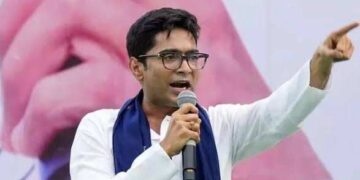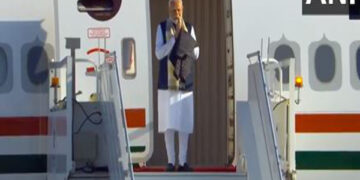Atal Bihari Vajpayee Bio in Hindi: Atal Bihari Vajpayee was a great leader of Indian politics who gave a new direction to Indian democracy with his thinking, working style and personality. He was one of the founders of Bharatiya Jana Sangh. Later joined the top leaders of Bharatiya Janata Party (BJP). Atal ji was not only a skilled politician but also a unique poet, thinker and orator.
Early life and education (Atal Bihari Vajpayee Ka Jivan Parichay (25 Dec 1924–16 Aug 2018)
Atal Bihari Vajpayee was born on December 25, 1924 in Gwalior, Madhya Pradesh in a Brahmin family. His father Krishna Bihari Vajpayee was a teacher and poet. Atal ji graduated from Victoria College (now Lakshmibai College), Gwalior.
Later he obtained a master’s degree in Political Science from DAV College, Kanpur. It was during his studies that his interest in literature and politics developed.
Beginning of political career (Atal Bihari Vajpayee Political Career)
Atal ji’s political career started with his association with Rashtriya Swayamsevak Sangh (RSS).
After India’s independence in 1947, he joined the Bharatiya Jana Sangh, which later emerged as the Bharatiya Janata Party.
His eloquence and oratory skills quickly made him a popular leader. In 1957, he was elected to the Lok Sabha for the first time.
Atal Bihari Vajpayee Birth Anniversary: Our ‘Atal ji’ was Ajatashatru
Biggest works and achievements (Atal Bihari Vajpayee Achievements)
1. Tenure as Prime Minister
Atal Bihari Vajpayee was the Prime Minister of India three times. First time in 1996 for 13 days. Then the second time for 13 months from 1998 to 1999. Then for the last time for a full term from 1999 to 2004. His tenure is known for many historic decisions and reforms-
Pokhran nuclear test (1998): Under Vajpayee’s leadership, India conducted the Pokhran-II nuclear test, which established India as a global nuclear power. This move strengthened India’s position on the international stage.
Golden Quadrilateral Project: This ambitious road project was started during the reign of Atal ji, which connects the four major metros of the country – Delhi, Mumbai, Chennai and Kolkata. This was a step that changed India’s infrastructure.
Reforms of the economy: After the liberalization of 1991, Atal ji pursued economic policies and encouraged foreign investment in the country. He took forward the process of disinvestment, privatization and liberalization.
Lahore Bus Tour: Vajpayee visited Lahore in 1999 in an effort to establish peace with Pakistan. This was a bold step which tried to give a new direction to India-Pakistan relations. However, the Kargil war later disrupted this process.
2. Contribution as a poet and litterateur
Atal ji also had a deep love for literature and poetry. His poems are a reflection of his thoughts and feelings. His poems give the message of inspiration, struggle and hope and inspire people even today. Some of his famous poems are as follows:
“I sing a new song”
“Harivansh’s dream”
“Faced with death”
Controversy and criticisms
There were many controversies in the life and career of Atal Bihari Vajpayee (Atal Bihari Vajpayee Controversy).
Gujarat riots (2002): Communal riots occurred in Gujarat during his tenure as Prime Minister. He was criticized a lot for this. However, he had publicly urged the then Chief Minister Narendra Modi to follow ‘Rajdharma’.
Relations with Pakistan: He faced criticism from both sides due to the Lahore bus march and the Kargil war. On one hand, some described him as ‘too soft’ towards Pakistan, while on the other, some called his peace talks ‘failed’.
Economic Policies: The opposition criticized his economic policies as anti-poor and pro-privatization.
Opposition opinion and image
The biggest specialty of Atal Bihari Vajpayee was that he was highly respected even among the opposition leaders. Congress leader Sonia Gandhi called him ‘a great leader of India’. Left leaders also praised his leadership skills. He was a ‘universal leader’ for all parties.
international image
Atal ji’s foreign policy gave India a strong position on the global stage. His foresight and bold decisions strengthened India’s position at the international level.
Despite the Pokhran nuclear test, he maintained good relations with the US and other western countries. His speaking style and calm nature made him popular among global leaders.
Untold stories of Atal ji (Atal Bihari Vajpayee Untold Story)
Simple nature: Vajpayee ji was known for his simplicity and sense of humor. He once said in the Lok Sabha, “I am the head of the party, but no one listens to me in the government.”
Discussion on tea: Vajpayee ji loved tea. It is said that he many times resolved major political disputes by calling opposition leaders for tea.
Bold decision: At the time of Pokhran test, he did not even inform some of his cabinet members about it till the last moment. This shows his courage and strategic skills.
Many historical events and decisions have been important in the political and social journey of India, which have influenced the direction and development of the country. The following 10 decisions are explained in detail, which play an important role in the overall development of India and its political-social perspective.
1. Plan to connect India
Given the diversity of India, the Indian government always accepted the fact that plans to connect the country are necessary. India has different languages, cultures and religions, which can sometimes become a hindrance in the path of unity. Many plans were made keeping this objective in mind.
One of the important plans is the formation of a “National Unity Council” and “expansion of road, rail and air routes”. Furthermore, the Constitution attempted to provide equal rights to every citizen by adopting an inclusive policy. Such schemes contributed significantly in keeping India united.
2. Promotion of privatization-start of disinvestment
The Indian economy faced an economic crisis in the early 1990s. As a result, the Indian government took steps towards privatization and disinvestment. In 1991, the then Prime Minister P.V. Economic reforms were initiated under the leadership of Narasimha Rao, which included privatization of public sector undertakings and attracting foreign investment.
Under this policy, many government companies were sold to private companies, which increased competition in the economy and accelerated the pace of development. However, it also had some critics who considered it to increase social inequalities.
3. Second phase of communication revolution
The first phase of the communication revolution in India began in the 1990s. When mobile phone and internet penetration increased in the country. Taking this process further, the 2000s saw the second phase of the communications revolution, in which telephone, Internet and broadband access reached largely rural areas. As a result, India made its mark at the global level in the field of Information and Communication Technology (ICT). Schemes like Digital India contributed significantly to the development of the country, bringing revolutionary changes in education, health, business and other sectors.
4. Sarva Shiksha Abhiyan
Right to education has always been a challenging issue in India, especially in rural and backward areas. To solve this problem, the Indian government launched the ‘Sarva Shiksha Abhiyan’ in 2001. Its objective was to give the right to education to all children.
Under this, efforts were made to build schools for children, recruit teachers and increase awareness about education. This campaign improved the level of education in the country as well as included every child in the mainstream of education.
5. Pokhran test
India conducted nuclear tests in Pokhran desert in 1998, which was a big message to the world. This test was an important step forward for India as a nuclear power. India did this after the first nuclear test called “Smiling Buddha”. It resulted in the country’s increased confidence in its security and independence. However, this test gave rise to some economic sanctions against India at the international level. But it also became a symbol of the country’s sovereignty and self-reliance.
6. Failure of Lahore-Agra Summit and Kargil-Kandahar
The Lahore and Agra summits were held in an attempt to improve relations between India and Pakistan. After the Lahore Summit in 1999, hopes for establishing peace between the two countries had increased. But the Kargil war in 1999 foiled it. Subsequently, the Kandahar hijacking incident created further tension in India-Pakistan relations. There were many changes in India’s policy during this time, and there was constant conflict in the relations between the two countries.
7. POTA Act
‘POTA’ (Prevention of Terrorism Act) was a law which was implemented by the Government of India in 2001 to deal with terrorism. This law provided more powers to take strict action on terrorist activities and arrest terrorists.
However, when this law was implemented, it also had to face allegations of human rights violations. The opposition saw this as dictatorship. This law was repealed in 2004. But it was an important decision which influenced India’s policy towards terrorism.
8. Formation of Constitution Review Commission
A need was felt to update the Constitution of India from time to time, so that it could be in line with the changing circumstances of the country. In 2000, the Indian government constituted the Constitution Review Commission, headed by Justice M.N. Established under the chairmanship of Venkatachaliah. This commission made suggestions for reforms in the Constitution, such as redistribution of powers between the central and state governments, reforms in the judiciary and changes in the powers of the President. Although these suggestions were not fully implemented, this Commission was important for the purpose of maintaining the relevance of the Constitution.
9. Ban on caste wise census
Casteism has been a sensitive and complex topic in India. In 2011, the Government of India announced the conduct of a caste-wise census in an effort to know how much different castes contribute to the social and economic development of the country. However, the process generated many controversies and was considered sensitive from constitutional and social viewpoints. As a result, the caste-wise census was put on hold and discussions and disagreements continued on the issue.
10. Following Rajdharma
‘Rajdharma’ is the policy that the rulers of India should follow, which enshrines the spirit of fairness, secularism and equitable governance. This word is important in the Indian Constitution and politics. Its observance applies to Indian leaders. Whenever any government is accused of not performing its duties properly, there is talk of following Rajdharma. It not only symbolizes commitment to democratic values, but it also points towards morality and responsibility in Indian politics.
These 10 decisions have been important events and decisions in the history of India, which influenced the political, economic and social direction of the country. These decisions necessitated looking at the Indian society from a new perspective and brought changes in various areas of development.
Even after retiring from politics in 2004, Atal ji’s influence remained on Indian politics. In 2015, he was awarded the ‘Bharat Ratna’, India’s highest civilian honour. He died on August 16, 2018. But his legacy and contribution are still a source of inspiration in Indian politics and society.
Atal Bihari Vajpayee was not only a politician, but he was also a thinker, poet and patriot. His life is a symbol of struggle, success and service. His foresight, leadership and humanitarian approach made him a ‘steadfast’ pillar of Indian politics. His personality and his ideas will always remain for the generations to come.
Will remain a source of inspiration.






